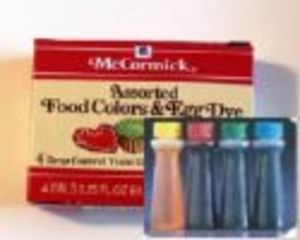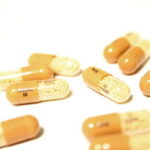If you have a child that has shown symptoms of ADD or ADHD, or if you find that you are always tired (even after a good night’s rest), and have constant mood swings, your family may be experiencing food intolerances coming from places that you might not expect-like fruits and vegetables.
Salicylate, which is in all natural foods, is found in high concentrations in many of the fresh fruits and vegetables that we enjoy on a regular basis. Salicylate is a form of an antibiotic that plants produce on their own in order to ward off impurities. An abundance of this substance could cause major complications, such as pain and swelling in the joints, migraine headaches, depression, and acne, along with more serious conditions, like arthritis or fibromyalgia. Here is a simple guide for avoiding foods with a high salicylate content.
-Pay attention to the color of your foods. Many people have a problem digesting mint and other green leaves, such as parsley or spinach, because of the high salicylate count. These plants have more chlorophyll, which gives them their green color, and these plants have a stronger defense system for fighting off germs. This is also the reason why many people take chlorophyll supplements in order to cleanse the blood and rid the body of toxins. However, if you are sensitive to salicylate, you will most likely have an adverse reaction to a chlorophyll supplement. Fruits and veggies that are red or orange in color also have a high salicylate content, due to their high concentration of beta carotene, which is also a cleansing agent for the body that is believed to help improve and maintain vision as well. You may be able to eat carrots or sweet potatoes in slightly larger servings than spinach, but be careful not to overdo it. Also, tomatoes and tomato products may give you a bad reaction-if you suddenly get a headache after eating a slice or pizza or a serving of enchiladas, it could be salicylate intolerance.
-Watch how your food is prepared. Ironically, the canned versions of some foods are healthier for people with salicylate intolerance. For instance, fresh pineapple may cause a reaction, but canned or frozen pineapple in moderation may be just fine. Fresh olives should not pose a problem, but canned black olives could mean a headache or extreme fatigue. Also, dried fruits are a no-no for people who cannot tolerate high levels of salicylate, so raisins, prunes, and dried fruit assortments should be eliminated from the diet. Pay attention to the way your food is prepared and chart your reactions to figure out if you need to prepare your food differently.
-Fresh is always best. Foods with additives and preservatives can aggravate this condition, so try to eat organic whenever possible. Ingredients like MSG, modified food starch, gelatin, benzoates (found in most sodas), and red and yellow dyes could cause hyperactivity, irritability, head and muscle pain, lack of concentration, and rashes or hives, so even if you’re eating pretty healthy, you’ve got to read the fine print for filler ingredients that can harm you.
-Food portions are important. Since every fruit or vegetable will have some amount of salicylate in it, it’s important to watch how much of the ‘risky’ foods you eat, but you may need to avoid some foods altogether. Many people cannot tolerate strawberries at all, but can eat small amounts of peaches or plums. You may also want to peel the skin off of apples or pears, since the red pigment in these fruits is part of what contributes to the symptoms-cutting red dyes out of the diet has also been proven to help children with ADHD.
If you think you may be experiencing some of these symptoms, and aren’t sure if your reactions are food related, be sure to talk to your doctor about the possibility of creating a diet plan that will help you to feel better permanently. For more information, visit www.aapcc.org or www.salicylates.net.






